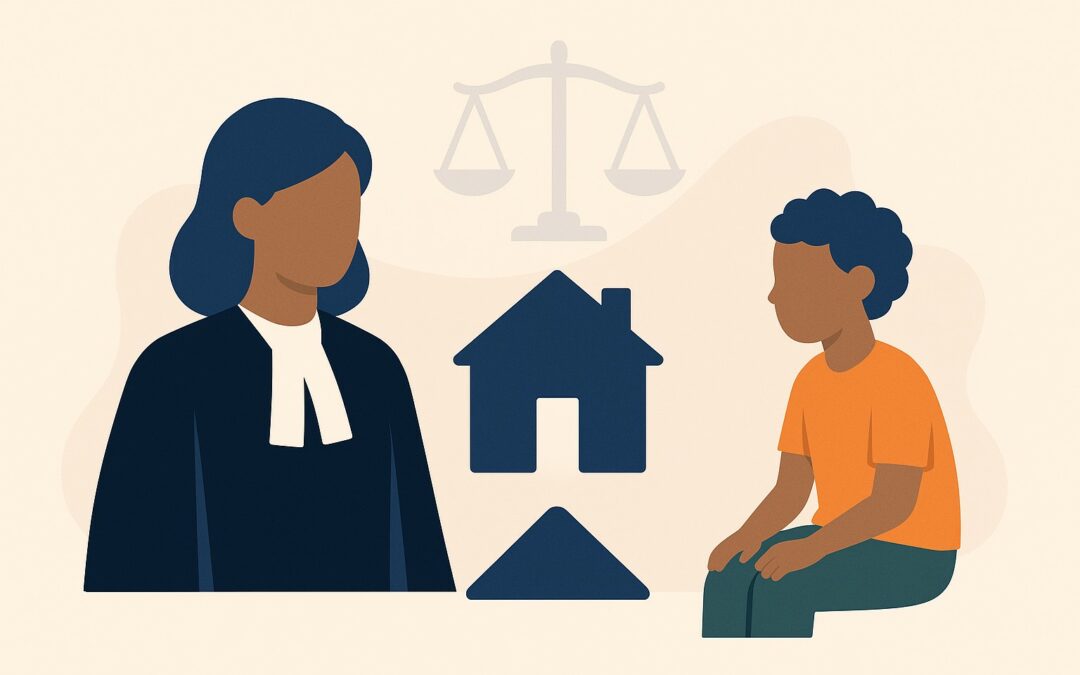Placing a child is a serious decision made by a judge when a minor’s safety, health, or development is threatened in their family environment.
This measure aims to protect the child while ensuring the rights of both the child and their parents are respected.
Here are the key points to understand this process, its different forms, and its duration.
1. What is child placement?
Child placement involves temporarily entrusting a child to a person, service, or institution other than their parents in order to ensure their protection when the family is temporarily unable to meet the child’s basic needs.
This measure mainly falls under the jurisdiction of the juvenile court judge, within the framework of educational assistance.
2. Placement procedure: how does it work?
The procedure often begins with a referral to the juvenile court judge (by the parents, the public prosecutor, or even the child themselves if they are capable of discernment).
The judge examines the case, hears all parties, and may order social investigations or expert assessments.
If the situation is deemed dangerous for the child, the judge can order a temporary or long-term placement.
Safeguards for the family and the child
-
-
- Adversarial hearings and the right to legal representation for all parties involved.
- The child’s hearing, if they are capable of discernment.
- The possibility to appeal or pursue other legal remedies against the judge’s decision.
-
3. Types of placement
The judge may decide on several forms of placement depending on the child’s situation:
-
-
- With the other parent: The child may be placed with the parent who did not have regular custody.
- With an extended family member: Uncle, aunt, grandparents, or any trusted person.
- In foster care: Through the child welfare services (ASE).
- In a specialized institution: Educational centers, social child care homes, or medical facilities if needed.
- At-home placement (educational placement at home): The child remains with their parents but under increased supervision and support from educational services.
-
4. How long does a placement last?
-
-
- Standard rule: The maximum duration of placement is generally two years. The judge must specify the exact duration in the decision, under penalty of invalidity. The decision may be renewed if necessary with a justified ruling.
- Exception: A longer placement is possible if the parents face serious, severe, and chronic difficulties, but it must be justified by the judge and include regular assessments. This duration cannot exceed two years without renewal. Placement in a service or institution can be ordered for a longer period if the parents present serious, severe, and chronic relational or educational difficulties. Annual or semi-annual reports (for children under two) must be submitted to the juvenile court judge.
-
Summary Table
| Type of Placement | Maximum Duration | Renewal Possible | Special Conditions |
| Standard Placement | 2 years | Yes, by justified ruling | Annual report required |
| Long-term Placement | > 2 years (exceptional) | Yes, if serious parental difficulties | Strong justification, regular assessments |
| Temporary Placement | 6 months (renewable) | Yes, once | For urgent situations, quick decision |
5. How is a placement ended?
Placement ends in several cases:
-
-
- At the end of the period set by the judge, unless renewed if the dangerous situation persists.
- By the judge’s decision at any time, if the child’s situation improves and they are no longer at risk.
- At the request of the parents, the service, or the child: the judge can be petitioned to re-examine the situation and decide to end the placement.
- When the child reaches adulthood: placement ends automatically unless there is an explicit agreement from the young adult.
-
It is also possible to request a modification of the placement (e.g., a gradual return of the child to the family home).
6. Monitoring and review of the situation
During placement, the child’s situation is regularly monitored:
-
- An annual report (or semi-annual for children under two) is submitted to the judge to evaluate the child’s overall situation: health, schooling, family relationships, etc.
- This monitoring ensures that the placement continues to serve the child’s best interests and allows for modifications or termination if necessary.
Conclusion
Child placement by a judge is an exceptional decision motivated by the need to protect the child.
It follows a strict procedure that guarantees the rights of all parties.
Measures are always temporary and regularly reviewed to prioritize the child’s return to their family as soon as it is safe and possible.
Further guidance
If you or someone close to you is affected by a placement procedure, it is recommended to consult a specialized attorney or a family support organization for guidance and to ensure your rights are upheld.
Do not hesitate to schedule an appointment for professional assistance.
© Photo : AI
